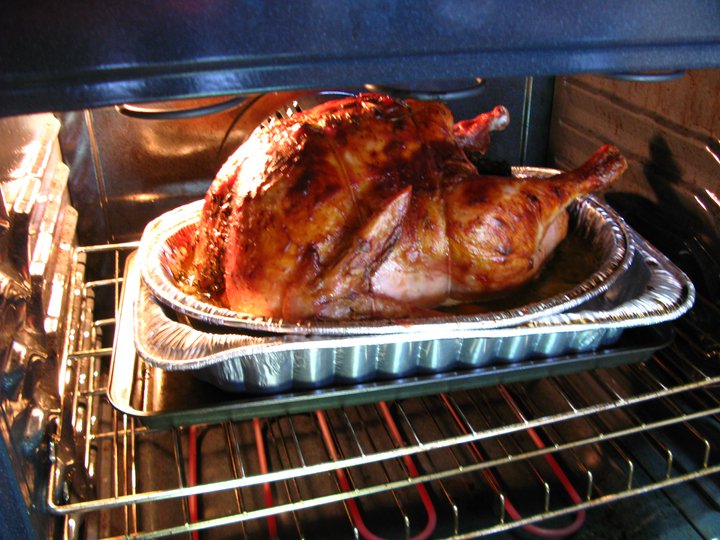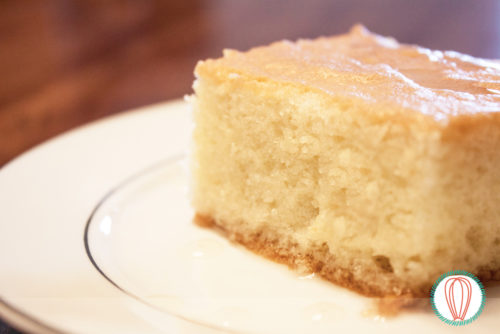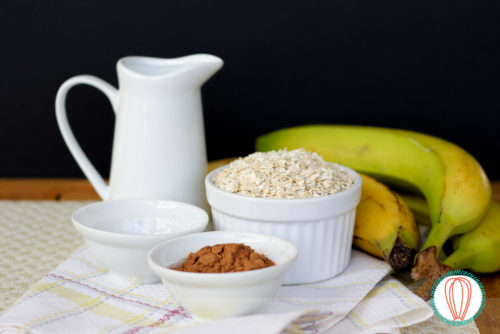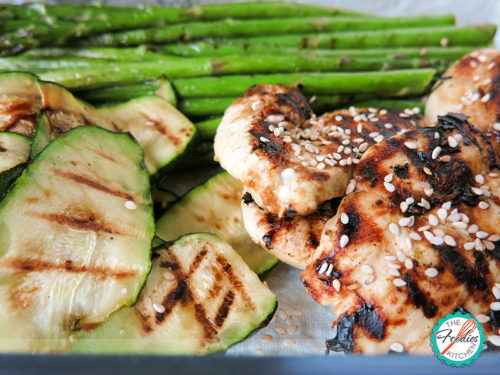
Roasting a Turkey 101
This post is also available in ENGLISH (INGLÉS)
The information that follows includes general guidelines for roasting a turkey which we got from Williams-Sonoma and Epicurious’ websites. We’ve added some of our own comments as well.
Happy Thanksgiving!
Helga
What Size Turkey to Buy
To ensure ample servings for Thanksgiving dinner as well as generous leftovers, allow for 1 to 1 1/4 lb. of turkey per person.
What Size Pan to Use
For best results, roast your turkey on a wire rack in an open roasting pan. Because of the turkey’s weight, a sturdy pan with good handles is recommended. If you use a foil roasting pan, double it for extra strength and take special care when transferring it into and out of the oven.
I use a foil roasting pan ( I know, I should have a proper roasting pan by now… I’ll get to it). Anyway, I double it as this tip suggests, and for easier handling I transfer it to a large cookie sheet so it’s easier to move around when I set it on my counter top. Remove the turkey from the refrigerator 1 hour before roasting. Do not leave the turkey at room temperature longer than 1 hour.
| Turkey Weight | Minimum Pan Size |
| Up to 12 lb. | 14″ x 10″ x 2 3/4″ high (small) |
| Up to 16 lb. | 15 3/4″ x 12″ x 3″ high (medium) |
| Up to 20 lb. | 16″ x 13″ x 3″ high (large |
Roasting an Unstuffed Turkey
The times listed below are calculated for an unstuffed turkey brought to room temperature and roasted at 400°F, breast side down, for the first 45 minutes, then turned breast side up and roasted at 325°F until done.
| Turkey Weight | Approximate Roasting Time |
| 10 to 12 lb. | 2 1/2 to 3 hours |
| 12 to 14 lb. | 2 3/4 to 3 1/4 hours |
| 14 to 16 lb. | 3 to 3 3/4 hours |
| 16 to 18 lb. | 3 1/4 to 4 hours |
| 18 to 20 lb. | 3 1/2 to 4 1/4 hours |
| 20+ lb. | 3 3/4 to 4 1/2 hours |
Roasting a Stuffed Turkey
Stuff the turkey just before putting it in the oven (do not stuff it earlier). Spoon the dressing loosely into the body and neck cavities. Do not overfill, as the dressing will expand during roasting. Truss the turkey (see related tip at left).
To facilitate removing the stuffing, first line the inside of the cavity with a double layer of cheesecloth, allowing it to extend beyond the cavity by a few inches. Then spoon the stuffing inside. After roasting the bird, gently pull the overhanging cheesecloth and the stuffing will slip out easily, neatly tucked inside the cheesecloth.
To ensure that a stuffed turkey cooks evenly, roast the bird slowly, breast side up, at 325°F, covering the breast loosely with foil for the first two-thirds of the roasting time. Using the chart above, add about 30 minutes to the total cooking time for stuffed birds weighing 16 lb. or less, and about 1 hour for birds weighing more than 16 lb.
Additional Tips
1. After taking the turkey out of the oven, let it rest for 20 to 30 minutes. This allows time for some of the juices to be absorbed back into the meat, which makes it easier to carve and more moist.
2. If roasting a stuffed bird, remove all of the stuffing at serving time.
3. After dinner, remove any remaining meat from the bones and refrigerate the leftovers.
I wanted more information on roasting times. And what about basting?
Personally, I don’t flip the bird once I put it in the oven. I place it breast side up and leave it to cook, so this is what I found most useful when it comes to timing: ( I roast mine at 350F)
| Size of Turkey: | Roast Time: | Temperature: |
| If your turkey weighs 12 to 14 pounds, roast it for: | 2 1/4 to 2 1/2 hours 2 1/2 to 2 3/4 hours 2 3/4 to 3 hours 3 to 3 3/4 hours | 425°F 400°F 350°F 325°F |
| If your turkey weighs 15 to 16 pounds, roast it for: | 3 to 3 1/4 hours 3 1/4 to 3 1/2 hours 3 1/2 to 3 3/4 hours 3 3/4 to 4 hours | 425°F 400°F 350°F 325°F |
| If your turkey weighs 18 to 20 pounds, roast it for: | 3 1/2 to 3 3/4 hours 3 3/4 to 4 hours 4 to 4 1/4 hours 4 1/4 to 4 1/2 hours | 425°F 400°F 350°F 325°F |
| If your turkey weighs 21 to 22 pounds, roast it for: | 4 to 4 1/4 hours 4 1/4 to 4 1/2 hours 4 1/2 to 4 3/4 4 3/4 to 5 hours | 425°F 400°F 350°F 325°F |
| If your turkey weighs 24 pounds, roast it for: | 4 1/4 to 4 1/2 hours 4 1/2 to 4 3/4 hours 4 3/4 to 5 hours 5 to 5 1/4 hours | 425°F 400°F 350°F 325° |
Basting
Traditional recipes call for basting the turkey every half hour, to moisten and flavor the bird. Basting is a simple process that just requires opening the oven and spooning (or using a turkey baster to squirt) the pan juices all over the turkey. You can add butter to the roasting pan for a richer basting solution, or have turkey broth simmering on the stove to use if the pan juices run dry. Basting will certainly help the skin brown up nicely, but opinions vary on whether the liquid actually penetrates the skin to moisten the flesh. And remember: The open oven door will allow heat to escape, lowering the interior temperature and lengthening the roasting time. For these reasons, today’s cooking trends favor moistening methods that don’t require basting, such as brining the turkey before roasting, stuffing butter under the skin, or roasting the turkey breast side down (flipping halfway through cooking to get an even brown) so it self bastes.
Alternately, you can split the difference by treating the bird with a brine and/or butter mix before cooking, then basting it every once in a while—say on the hour instead of every 30 minutes—as it roasts.
How Do I Know When My Turkey’s Done?
To kill all bacteria, a turkey must be cooked to an internal temperature of 165°F. According to the U.S.D.A., the bird must reach this temperature before you take it out of the oven. As it rests, the temperature will then continue to rise to around 180°F. For juicier meat, however, some people prefer to take the bird out at 150°F so the temperature will rise only to 165°F as it rests. This is less of a risk if you get an organic or heritage bird, which is less likely to contain harmful bacteria.
Whichever temperature you choose, be sure to use a meat thermometer to determine it. In the past, people used to use the color of the meat as an indication of doneness: The turkey was pierced with a knife, and if the juices were clear instead of pink, it was done. But this is not a reliable method, for several reasons. First, pinkness can disappear before a safe temperature is reached. And on the flip side, some turkeys (especially organic and heritage birds) may never lose their pink color, even if they’re cooked to well above 165°F.
To check the temperature, you can use either an instant read thermometer (which you insert after cooking, as it gives a reading immediately) or a remote thermometer (the type that has a probe that you insert before cooking, which connects to a digital display that sits on your counter). Either way, insert the probe into the thickest part of the turkey’s thigh, being careful not to touch the bone (which will skew the reading). The thigh is the best place to test because it takes the longest to cook, but to be on the safe side, it’s smart to also take the turkey’s temperature underneath the wing.
If you find the skin is getting too dark and the desired internal temperature hasn’t been reached, loosely tent the browned parts with a double-thick layer of buttered aluminum foil to protect them from the heat.
The chart below gives approximate roasting times for an unstuffed turkey to meet the U.S.D.A.-mandated 165°F. A stuffed bird will take approximately half an hour longer. Basting will lengthen the cooking time as well.
The Foodies’ Kitchen Tips:
Now, for the secrets no one tells you. We all want our turkey to look nicely browned and glossy like the ones we see on magazines. To get that look you absolutely need to roast your turkey UNCOVERED to get an even brown color. Baste, baste, baste! I baste mine every 30 minutes. You can use a baster or a large spoon to do this. This will help make your turkey nice and moist. You know what else I do? I inject the turkey with white wine before I put it in the oven. Give it a good dose, get the breast and the legs. I put in about 2 cups of white wine, use a nice cooking wine. At the end of the roasting time, check the color. If you think it’s getting too tan, cover it with foil. To get a richer color and that beautiful gloss, you need a glaze.
Here’s what you do: A turkey glaze will make your bird look shiny and beautiful. The jelly helps brown the skin and gives the meat a hint of sweet.
Glaze
Ingredients
1 tablespoon of lemon juice
1 teaspoon of worchestershire sauce
1/4 teaspoon black pepper
1 teaspoon. dry mustard
3/4 cup plum or cranberry jelly
Procedure:
- Add the jelly, lemon juice, black pepper, Worcestershire sauce and dry mustard to a small pot or saucepan with a lid.
- Stir the mixture constantly over low heat until everything is combined and the jelly has turned into a smooth liquid.
- When the turkey has about 10 to 15 minutes left to cook, brush your turkey with the glaze once every 5 minutes until the turkey is done or you have used all the glaze. Glazing it twice is sufficient, but a third glaze will add even more flavor.

© 2011 – 2020, The Foodies’ Kitchen. All rights reserved | Todos los derechos reservados
This post is also available in ENGLISH (INGLÉS)



